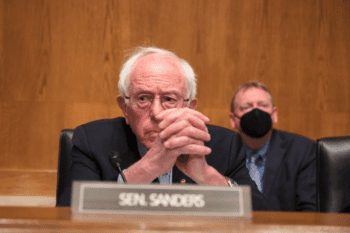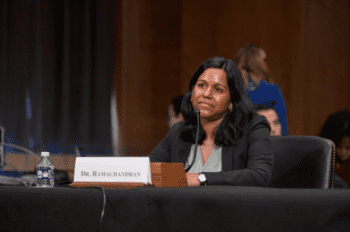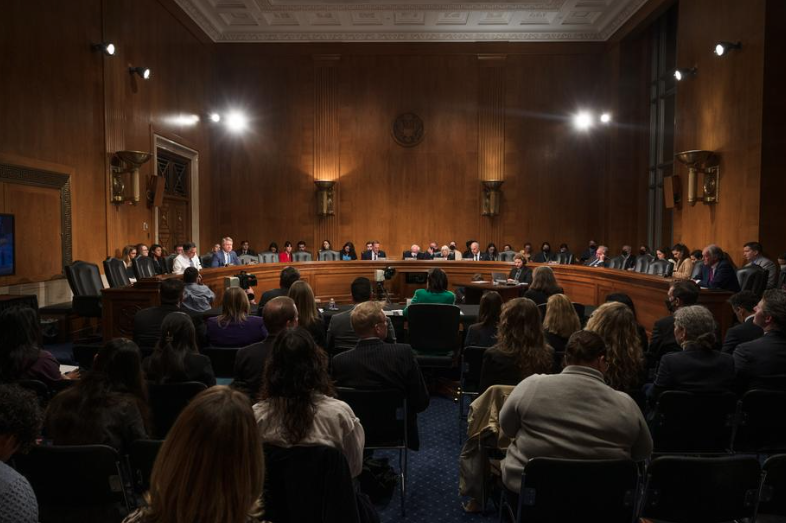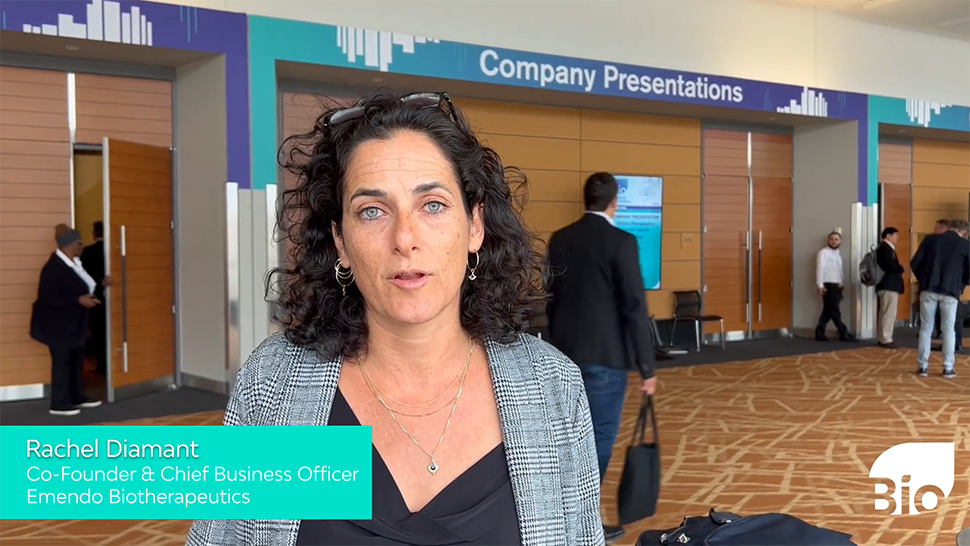“What scientists are telling us is that there is a reasonable chance that—God forbid—a pandemic is deadly as COVID-19 could occur in 10 years,” Sen. Bernie Sanders said in his opening remarks for the Senate HELP committee hearing, “Preparing for the Next Public Health Emergency: Reauthorizing the Pandemic and All-Hazards Preparedness Act” (PAHPA).


“All of us hope that that will not occur, but our job is to make sure that we are prepared if it does occur. That’s what this hearing is about. That is what this legislation is about.”
Indeed, it has been no secret that not only is the next pandemic potentially closer than most would like to think, as indicated by the recent outbreak of diseases like MPOX and recent bird flu epidemics. It is also no secret that the U.S.’s preparedness strategy has lagged behind where it should be to address—or even stop the next pandemic before it happens.
“We [politicians] don’t always agree,” said Sen. Bill Cassidy in his opening remarks, “but we set politics aside and come together on reauthorizing PAHPA. We know PAHPA is critical to protecting the health, safety, and security of assault.” The PAHPA framework is far from perfect, added the senator.
As such, the reauthorization of PAHPA is paramount in the coming months to get pandemic preparedness effectively started. The Senate HELP hearing is a key step in getting that process started. Within the Senate, at least, a bipartisan approach to the bill’s reauthorization seems to be underway.
Panel 1
Outlining federal pandemic response needs
The hearing was broken into two panels. The first panel was composed of three speakers from key government organizations: Dawn O’Connell, Assistant Secretary for Preparedness and Response for the Administration for Strategic Preparedness and Response (ASPR) with the Department of Health and Human Services; Rochelle Walensky, M.D., MPH, Director of the Centers for Disease Control and Prevention (CDC); and Robert Califf, M.D., Commissioner from the Food and Drug Administration (FDA).
“We are living in an increasingly interconnected world where diseases and other threats can travel quickly, unnoticed for days,” said O’Connell. “With infectious disease outbreaks becoming more frequent, we are also experiencing an increase in the frequency and intensity of public health threats and natural disasters. To keep up with the evolving threat landscape, ASPR must remain nimble and ever vigilant while learning from each response it leads.”
Among other priorities, O’Connell highlighted ASPR’s needs as: Supporting Procurements; Increasing Domestic Manufacturing; Ensuring the People are in Place to Prepare, Respond, and Recover; and Investing in Process Efficiencies.
“We know that it is not a matter of whether we will have another public health emergency or disaster, but a matter of when,” concluded O’Connell. “With your support, we can be ready.”
Prioritizing adult vaccine infrastructure
Echoing O’Connell’s conclusion, Rochelle Walensky, speaking on behalf of the CDC, testified, “While the COVID-19 pandemic was the most serious public health event in over 100 years, the increased frequency of infectious disease outbreaks should highlight the sobering reality that we should not be asking if we will face another serious public health threat, but when.”
As such, CDC recommendations included: supporting and further developing state-of-the-art laboratories; expanding the public health workforce; and supporting and further developing world-class interoperable data and analytics; among others.


“Establishing a robust infrastructure for adult vaccination will support response readiness by reducing vaccination coverage disparities, improving outbreak control of vaccine-preventable diseases, and enhancing and maintaining the infrastructure needed for responding to future pandemics.”
Califf, speaking on behalf of the FDA, also spoke to the importance of developing and improving workforce populations and supportive infrastructure, as well as scientific bases. “I firmly believe that the best way to make this progress is for different sectors in today’s health care ecosystem to collaborate,” said Califf.
“More recently, I have had the pleasure of jointly leading multiple projects along with patients, consumers, and community leaders, to the great benefit of research and public health. The emergence of consumers and patients as active participants in the process of developing therapies and devising protocols for evaluation is an important theme to improve the relevance of our work to the people we serve.”
Panel 2
Patient access to pandemic therapies
The hearing’s second panel was focused on non-governmental speakers, including: Reshma Ramachandran, M.D., MPP, MHS, Assistant Professor of Medicine at the Yale School of Medicine; Robert Weissman, President of Public Citizen; and Martin Makary, M.D., MPH, Professor at Johns Hopkins University.
The panel focused on patient access to vaccines, therapeutics, and treatment as a major component of future pandemic preparedness. It also focused on the importance of rapid, collaborative governmental work that produces “clinical research in a timely fashion,” as Makary testified.


Ramachandran posed one key question during her testimony: How can we ensure that the American public has equitable access to medical countermeasures developed in response to public health emergencies in the future?
She closed, in part, “The federal government should continue to support through direct funding and resources across agencies the development of novel medical countermeasures in the form of therapeutics and vaccines.”
Ensuring therapies are widely available and affordable
“Public Citizen strongly supports public investment in public health research and development (R&D), including especially for pandemics and emergency situations,” testified Weissman. “But taxpayers must get a fair return on their investment. That should mean that the products that are the fruit of that investment are widely available and affordable for those who need them, on a global basis.
“The underlying theory of PAHPA was validated by the COVID pandemic,” concluded Weissman, “which showed the crucial importance of a real public health infrastructure to prepare for pandemics and emergencies and to make significant investments in biomedical innovation. But so too did the pandemic illustrate the very real costs—in dollars and lives—of failing to act proactively to ensure an adequate supply and affordability of key biomedical products.”




